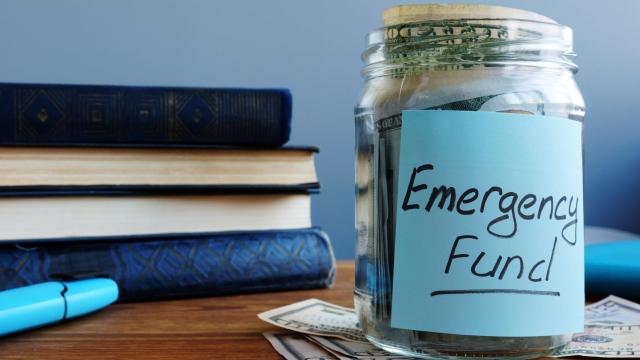While most financial experts agree that you should set aside emergency cash totaling three to six months of your expenses, that advice can be pretty broad — especially for such a large sum of money. Here’s a look at the barebones expenses that should be included in your emergency fund, and how to know whether you should aim for just three months, six months, or even more.
What’s an emergency fund?
An emergency fund is a cash reserve that will cover financial emergencies like job loss, surprise medical bills, or vehicle repairs. Unlike higher-risk investments like super, an emergency fund can be withdrawn on short notice, with no penalties or fees. It’s commonly recommended that you establish your emergency fund before you start investing, however if you’re struggling to keep up with high-interest debt, you’ll want to pay that down first.
How to calculate your emergency fund
Experts recommend setting aside three to six months worth of expenses. If you’re living paycheck to paycheck, this can sound a bit like a joke, but it can help to focus on shorter-term goals and then build out your emergency fund as you go. For example, you could start with a three-month goal by writing down the totals for monthly expenses you need to pay:
- Housing/rent
- Food
- Healthcare and insurance
- Utilities
- Transportation
- Debt
Expenses you wouldn’t include (at least, not yet), would include “nice to have” monthly expenses, as follow:
- Restaurants
- Entertainment (including streaming subscriptions)
- Holidays
- Other savings
To help you add up the expenses, consider using this emergency fund calculator provided by Fool.com. In doing so, you might be surprised by some hidden expenses that can be diverted to an emergency fund, like a stray subscription service you barely use, or money spent on restaurant meals. Either way, the goal is to set up a portion of savings that’s dedicated to topping up your emergency reserves.
There’s no consensus on how quickly you should build up your emergency reserve, but since it’s for, well, emergencies, the quicker you can do so, the better (a reasonable goal would be at least one month’s worth of expenses within a year). If you’re starting from scratch, consider saving $1000 as an achievable starting goal (only 40% of Americans have enough money saved to cover an unexpected $1000 expense).
Consider the 3/6/9 rule
Since three to six months worth of expenses is a broad range, you also might want to consider the 3/6/9 rule to figure out how much you should save in your emergency fund:
- Save three months of expenses if: You have a secure job, a steady paycheck, minimal debt, and live alone with no mortgage or dependents. You can get away with a much smaller emergency fund if you always have the option to live with your parents as a last resort, too.
- Save six months of expenses if: You have kids and carry large debt obligations like a mortgage or student loans. With dependents, you’ll need more of a cushion.
- Save nine months of expenses if: You have an insecure job, or make irregular income, like contract or freelance work. If you have children and are the sole earner in your family, ideally you’d have a cash fund that covers nine months’ worth of expenses.
Where you should keep your emergency fund?
The most important thing you’ll need in a financial emergency fund is liquidity — the ability to access that cash quickly, without penalties or fees. This is why you’d stash that money in a savings, checking, or money market account, rather than having it locked up in an investment. This Lifehacker post will walk you through your options.

Leave a Reply
You must be logged in to post a comment.